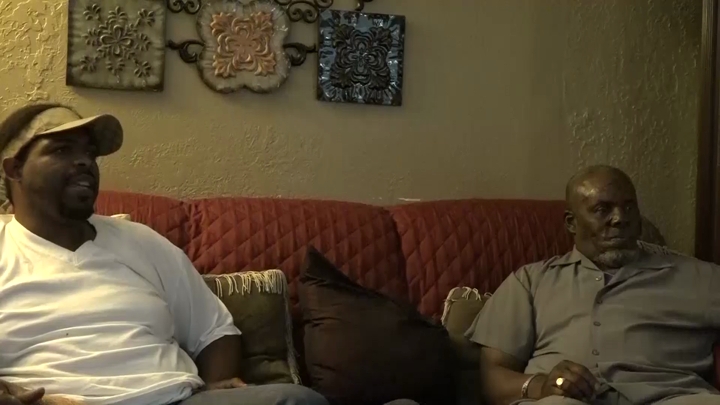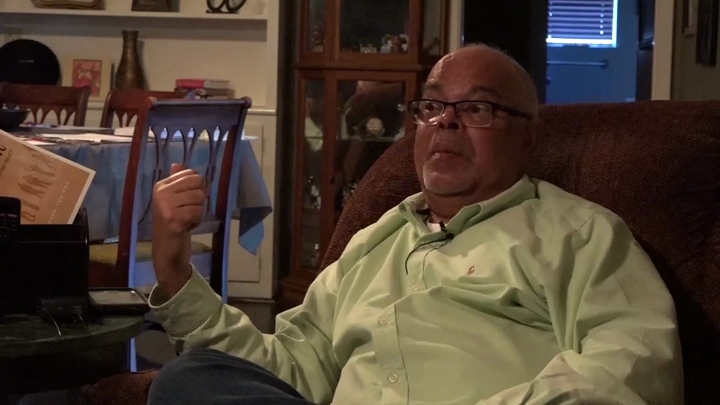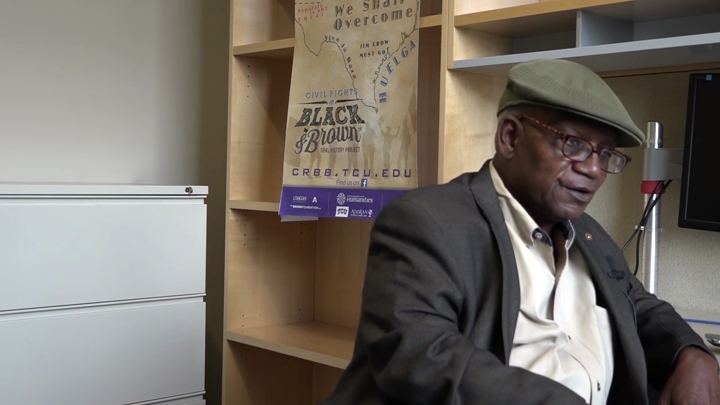Calyen / Black Power Activism in New York, Part One
sign up or sign in to add/edit transcript
Interviewer: Back to New York, you mentioned there being differences. Did you have any—in terms of political representation, how did that differ in New York versus in Conroe? Calyen: Well, a lot of activists in New York, so a lot of people were starting—at that time, in Harlem, the Black Panthers were very prominent. The newspaper, Amsterdam News, would come out with different protests and marches. Adam Clayton Powell was in his heyday. His son was trying to make a name for himself. Interviewer: There was Shirley Chisholm. Calyen: Shirley Chisholm had been elected to Congress. I think she was the first black woman to be a congressperson and later on her run for presidency, so she was real prominent at that time. Jesse Jackson was always coming there with his Rainbow Coalition to march someplace. I worked in Harlem and there was always—at Theresa Towers, there was always a protest or something on Saturday and it would always blend into some type of movement or some type of march or protest for betterment. Interviewer: What kind of work were you doing at this time? Calyen: I worked for the Post Office. Interviewer: And you were married? Calyen: Uh-huh. I drove the bus at night and worked for the Post Office in the daytime. Interviewer: How did you get into the Post Office? Calyen: Well, they had a special for veterans and that’s how I ended up there. Veterans could take a walk-in test. You would come in and take a walk-in test and the next week you’d get hired. So, I did that and at that time they were paying three dollars and eighty-three cents which was the best pay in all of the city. Nobody else, even the police weren’t making that much money. That was the best paying job in the city. So, I started at three dollars and eighty-three cents. Interviewer: So, at that time, you were working, you were married. Did you still participate in any activism while in New York? Calyen: Yeah, uh-huh. Interviewer: Did you go to marches? Calyen: Went to marches, uh-huh. Went to churches and marches. Interviewer: What were some of the grievances that you can remember? What were they fighting for or against? Calyen: Always betterment. Always schools, education. Social injustices. Better pay. Interviewer: In terms of, I guess, explicit political engagement, do you see a difference between the political engagement in Conroe and the political engagement in New York City that black people had? Calyen: Yeah. In New York, especially in the Harlem area, which was at that time was maybe 95 percent black. There was always something going contrary to the way black people were thinking. Some activists would lead a protest or march and they’d come in front of a business with a sign or they’d come into a store—
| Interview | Interview with Henry Calyen |
| Subjects | Family › Marriage |
| Work | |
| Geography › Places (Cities, Towns, Neighborhoods, and Intersections) | |
| Education | |
| Court Cases | |
| Military › Veterans' benefits | |
| Direct Action › Marches | |
| Black Power | |
| Black Power › Black Panthers | |
| People › Davis, Angela | |
| People › King, Martin Luther, Jr. | |
| Direct Action › Protests | |
| Family › Siblings | |
| Tags | Chisholm, Shirley |
| Jackson, Jesse | |
| Towers, Teresa | |
| sign up or sign in to add/edit tags | |
| Interview date | 2016-07-06 |
| Interview source | CRBB Summer 2016 |
| Interviewees | Calyen, Henry |
| Locations | New York City, NY |
| Conroe,TX | |
| Duration | 00:03:41 |
| Citation | "Black Power Activism in New York, Part One," from Henry Calyen oral history interview with , July 06, 2016, Conroe, TX, Civil Rights in Black and Brown Interview Database, https://crbb.tcu.edu/clips/3426/black-power-activism-in-new-york, accessed December 20, 2025 |






